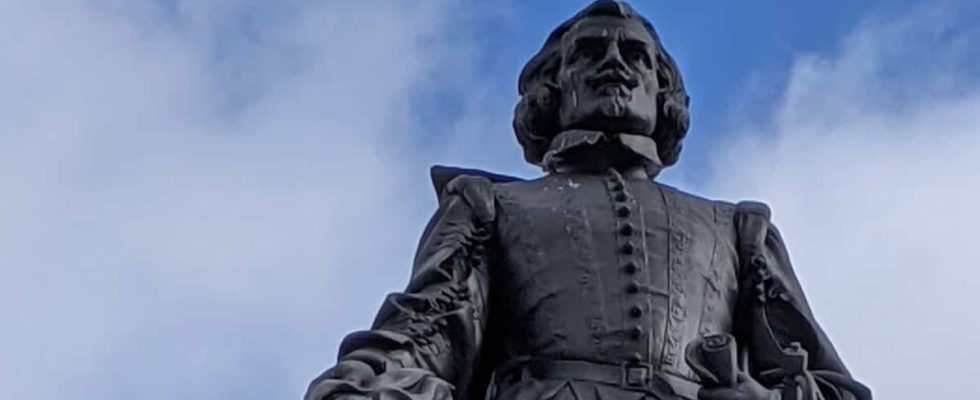Will the tomb of Samuel de Champlain, founder of Quebec, never be found? In anticipation of the 400e anniversary of his death, in 2035, experts would like excavations to be resumed more intensively to identify his grave.
• Read also: The discovery of burials dating back to the 16th century in Old Lévis arouses interest
Carl Lavoie, an independent professional archaeologist, is one of them. He spent years analyzing the different hypotheses concerning the location in Old Quebec of the burial of Champlain, who died on Christmas Day in 1635.
“It’s still on my mind. I’ve been working on this for 40 years, minimum. I continue to analyze the data,” shares Mr. Lavoie.
No active excavation with the specific aim of finding Champlain has been carried out since 1999. At that time, the late amateur geographer and archaeologist René Lévesque was convinced of having found a vault containing Champlain’s remains, before coming to nothing.
Location of the chapel
The least we can do, according to many, would be to restore the exact location of the chapel built in 1636 to house Champlain’s remains. A plaque is indeed installed at 9 1/2, rue de Buade, to mark this place, but it is incorrect according to a consensus of experts. The funeral chapel would be located elsewhere.
“It is more than disputed, it is said to be false. We must not forget that this is a plaque that was installed in the 1950s. At the time, we believed that the chapel was there. We never found the chapel, but we are certain that it is not where the plaque tells us,” says Jean-Marie Lebel, historian.
According to Mr. Lavoie’s research, in which the ethnologist Georges Gauthier Larouche also participated, the chapel would be located more between rue du Fort and the Post Office building.
Research carried out by Carl Lavoie, a professional archaeologist, leads us to believe that Champlain’s funeral chapel was located more under Rue du Fort rather than under Rue de Buade, as a plaque wrongly indicates.
Photo Diane Tremblay
“I am convinced of this. You would have to have damn good arguments to come and contradict me on that,” continues Mr. Lavoie.
The chapel was destroyed in 1640 by a fire which most likely took away several precious documents.
After the fire, the remains of Champlain and the two companions who shared the same crypt, the commissioner general of the company of Cent-Associés, François Derré de Grand, and the Jesuit father Charles Raimbault, would have been transported elsewhere.

Many believe that this plaque, located on the facade of 9 1/2, rue de Buade, should be removed.
Photo Stevens LeBlanc
“After 1640, we no longer know what happened to the vault of Champlain’s tomb. That’s where we lost track of it,” adds Mr. Lebel.
For his part, Mr. Lavoie does not see any other possible location than the Notre-Dame basilica in Quebec.
Hope persists
By recognizing the location of the chapel, this would constitute a step forward, especially in anticipation of 2035.
“What is important is to have a real place where we can say: Champlain was buried there. It would be great to be able to pay homage to Champlain where he was buried,” added Mr. Lavoie.
Mr. Lebel does not lose hope that one day the famous tomb will be found.
“Until archaeologists tell me: ‘We will never find it,’ I continue to believe that we can find it. […] I have not closed the file on Champlain’s tomb and I will not close it until the archaeologists have closed it,” assures Mr. Lebel.
Discovery of Champlain’s tomb: relative importance for Quebec City
Even if the discovery of Champlain’s tomb caused significant regional and even international media interest, the fact remains that, according to the City of Quebec, from a scientific and archaeological point of view, this discovery would be of “relative” importance.
“The importance of the possible discovery of Champlain’s tomb is more symbolic than scientific. The value of the scientific lessons that could be learned from such a discovery is relative,” said Jean-Pascal Lavoie, spokesperson for the City of Quebec. The latter is not related to the archaeologist Carl Lavoie.
“The information would undoubtedly be of interest, but would probably not disrupt the knowledge we already have of the lifestyles of the colonists in the early days of New France. That being said, it cannot be ruled out that such a discovery could bring its share of surprises,” continued the City spokesperson.
Opinions that differ
According to the Quebec Historical Society, Champlain is not just important for the city of Quebec, he is also important for all of North America, even if we had to wait nearly 230 years after his death, which occurred in 1635, for someone to be interested in the site of his burial.
“To say that importance is relative is a value judgment to which I do not subscribe. For me, it’s not relative. It’s important,” reacted André Potvin, president of the Quebec Historical Society.
The Ministry of Culture and Communications does not share the same opinion as the City. According to the government, such a discovery would be “of great interest, particularly historically and archaeologically.”
The ministry says it is ready to issue a permit to any applicant with the skills and resources necessary to carry out archaeological research relating to the search for the tomb of Samuel de Champlain. Requests will be evaluated based on existing program criteria and financial levers, it is mentioned.
